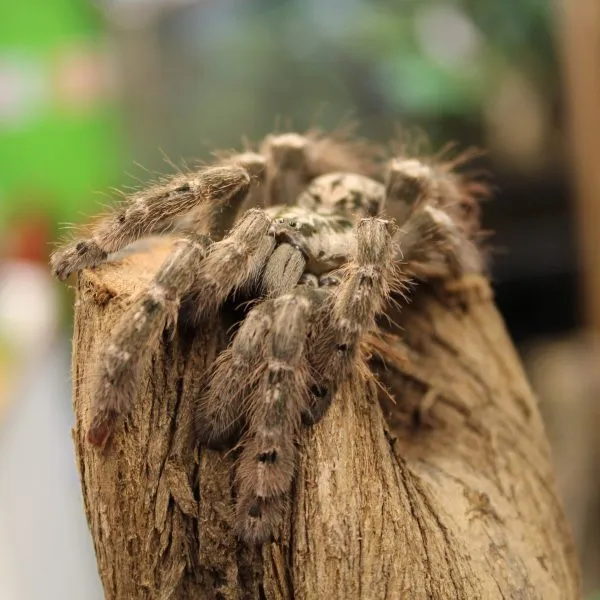What is a Togo Starburst Tarantula?
The Togo Starburst Tarantula, scientifically known as Heteroscodra maculata, is a fascinating and visually striking arachnid that captivates both novice and experienced tarantula enthusiasts. Native to West Africa, particularly the countries of Togo and Ghana, this spider is renowned for its vibrant starburst pattern on its carapace and legs, which gives it its common name. This species belongs to the family Theraphosidae, which encompasses a wide variety of tarantulas, but the Togo Starburst stands out due to its unique appearance and intriguing behaviors. Their striking appearance makes them a sought-after species in the pet trade, but it is important to understand their care requirements and temperament before bringing one home. This guide will delve into five amazing facts about the Togo Starburst Tarantula, providing valuable insights into its life, habitat, and care.
Appearance and Characteristics
The Togo Starburst Tarantula is a medium-sized species, typically ranging from 4 to 6 inches in leg span. Its most distinguishing feature is the striking starburst pattern on its carapace, a radiating design of cream or white markings against a dark brown or black background. This pattern extends down the legs, adding to the spider’s visual appeal. The abdomen is usually covered in urticating hairs, which the spider uses as a defense mechanism. These hairs can cause irritation upon contact with skin or eyes. The overall appearance of this tarantula is both elegant and intimidating, making it a popular choice for tarantula keepers who appreciate a visually stunning species. Proper care is crucial to maintain their health and vibrancy, including providing appropriate substrate, temperature, and humidity levels.
Coloration and Markings
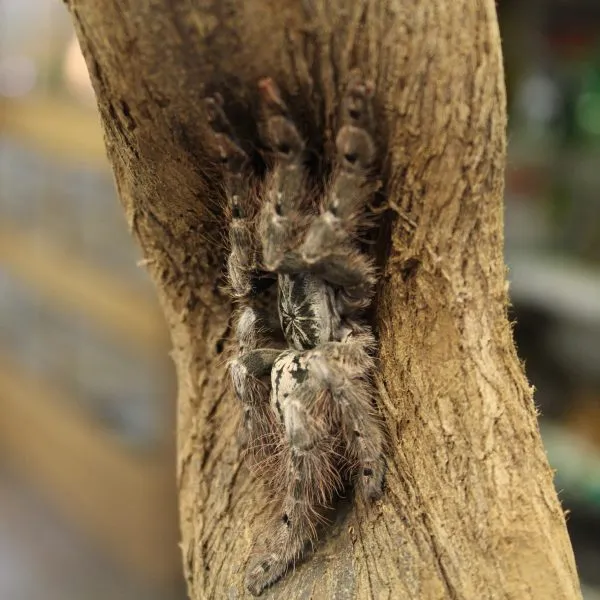
The coloration of the Togo Starburst Tarantula is one of its most captivating aspects. The carapace, the hard upper shell of the cephalothorax, features the prominent starburst pattern, with the markings varying slightly in intensity and size among individuals. The legs exhibit similar patterns, often displaying a banded appearance. The abdomen’s coloration can range from dark brown to black, providing a stark contrast to the lighter markings on the carapace and legs. The contrast between the light and dark areas creates a visually stunning effect, making the Togo Starburst a true standout among tarantula species. Regular molting allows the spider to shed its exoskeleton, revealing brighter and more vibrant colors. Maintaining proper humidity and providing a suitable diet are vital to ensuring the vibrancy of their colors.
Size and Lifespan
The Togo Starburst Tarantula typically reaches a leg span of 4 to 6 inches, with females generally being larger than males. Their lifespan varies depending on several factors, including care, diet, and environmental conditions. Females can live for 5 to 10 years, while males tend to have a shorter lifespan, usually 2 to 3 years, after reaching maturity. The growth rate of the tarantula is influenced by factors such as feeding frequency, temperature, and humidity. Regular molting is a characteristic of tarantula growth, during which they shed their exoskeleton to accommodate their increasing size. Providing appropriate housing, a balanced diet, and suitable environmental conditions are critical to ensuring a long and healthy life for the Togo Starburst Tarantula.
Habitat and Distribution
Understanding the natural habitat of the Togo Starburst Tarantula is crucial for providing proper care in captivity. These tarantulas are native to the tropical regions of West Africa, primarily found in Togo, Ghana, and possibly neighboring countries. They are arboreal, meaning they primarily live in trees, and are commonly found in forested areas and savannahs. Their habitat provides them with the necessary shelter, humidity, and access to prey. Replicating their natural environment in a terrarium setting is essential for their well-being, which includes providing adequate space, appropriate substrate, hiding places, and maintaining the correct temperature and humidity levels.
Natural Environment
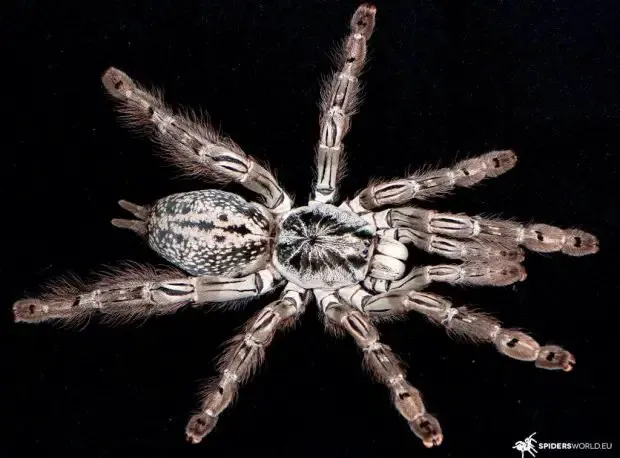
In the wild, Togo Starburst Tarantulas thrive in humid, tropical environments. They typically make their homes in tree hollows, under bark, or among dense vegetation. These spiders are ambush predators, meaning they wait for prey to come close. The dense foliage provides them with camouflage and protection from predators. The high humidity levels in their natural habitat are crucial for their survival, as they help prevent dehydration and facilitate molting. Maintaining similar conditions in captivity is vital to ensure their health and well-being, requiring careful attention to humidity, temperature, and enclosure design to mimic their natural environment.
Geographic Range
The geographic range of the Togo Starburst Tarantula is relatively limited, primarily encompassing the West African countries of Togo and Ghana. This species is less commonly found outside these specific regions, which makes them a unique and sought-after species. Their presence in these areas is due to the specific environmental conditions that support their survival, including appropriate temperature, humidity, and the availability of prey. While they are not considered endangered, their limited range makes them susceptible to habitat loss and environmental changes, highlighting the importance of conservation efforts to preserve their natural environment.
Behavior and Temperament
The Togo Starburst Tarantula is known for its defensive nature and relatively fast movements. They are not typically considered the most docile tarantula species and may display defensive behaviors when threatened, such as raising their front legs or flicking urticating hairs. They are also very quick and can move rapidly, making them a challenge to handle. It is essential to approach them with caution and respect their space. Providing an appropriate enclosure with ample hiding places can help reduce stress and promote a more relaxed behavior. Understanding their behavior and temperament is crucial for ensuring both the safety of the keeper and the well-being of the tarantula.
Defensive Behaviors
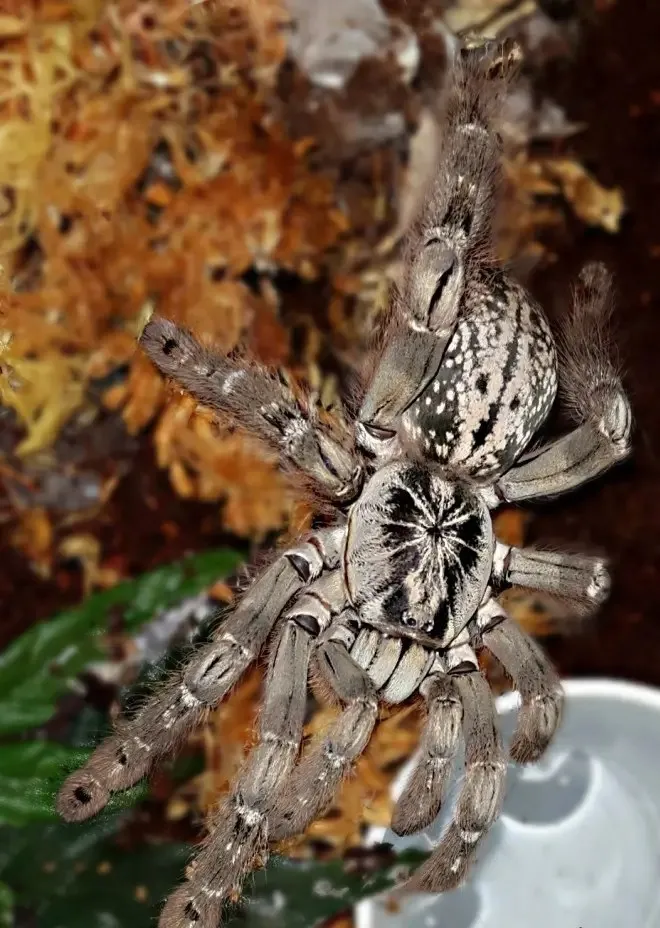
The Togo Starburst Tarantula, when feeling threatened, exhibits several defensive behaviors. One common defense mechanism is raising their front legs and presenting their fangs as a warning. They may also flick urticating hairs from their abdomen, which can cause skin irritation and discomfort. Furthermore, they are known to be fast and can quickly retreat or even attempt to bite if they feel cornered. It is crucial for keepers to be aware of these behaviors and avoid actions that could provoke a defensive response. Handling should be minimized, and the enclosure should provide adequate hiding places to reduce stress and promote a sense of security.
Handling and Interaction
Due to their temperament, the Togo Starburst Tarantula is generally not recommended for frequent handling. Handling can stress the spider and increase the risk of being bitten or exposed to urticating hairs. If handling is necessary, it should be done cautiously and with the utmost respect for the tarantula’s behavior. It is advisable to use a soft brush to gently guide the spider into a container if necessary. Creating a safe and secure environment within the enclosure, with plenty of hiding places, is a more beneficial way to interact with this species. Observing their natural behaviors, such as feeding and web-building, provides an enriching experience without the need for direct handling.
Diet and Feeding Habits
The Togo Starburst Tarantula is a voracious predator, primarily feeding on insects in the wild. In captivity, a varied diet is essential for their health and well-being. They readily consume a variety of insects, including crickets, roaches, mealworms, and occasionally, small vertebrates. The frequency of feeding depends on the spider’s age, size, and the temperature of the enclosure. Providing a balanced diet ensures that the tarantula receives the necessary nutrients for growth and molting. Offering the right amount of food and maintaining a clean environment are crucial aspects of their care.
Prey and Feeding Frequency
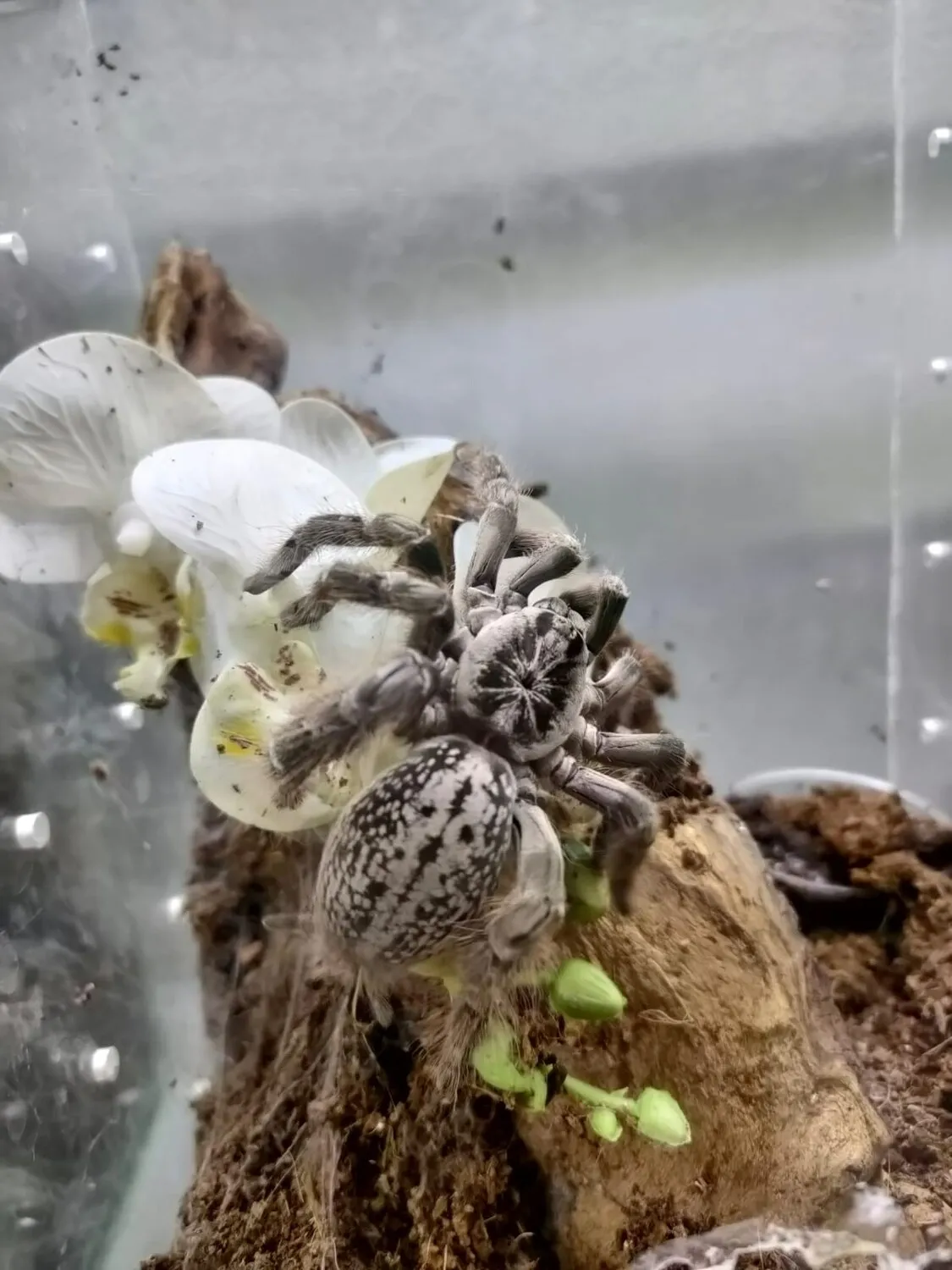
In the wild, the Togo Starburst Tarantula preys on a variety of insects, including beetles, grasshoppers, and other invertebrates. In captivity, a diverse diet is crucial for their health. Younger tarantulas should be fed more frequently, usually 2-3 times a week, while adults can be fed once a week or every other week. It is essential to vary the diet, offering a mix of crickets, roaches, and other suitable insects to provide a balanced nutritional profile. The prey should be appropriately sized for the tarantula to avoid any difficulty in catching or consuming it. Any uneaten prey should be removed to prevent stress and potential problems.
Nutritional Needs
The Togo Starburst Tarantula requires a balanced diet to thrive. Insects fed to the tarantula should be gut-loaded with nutritious food, such as vegetables and high-quality insect food, before being offered as prey. This practice ensures the tarantula receives essential vitamins and minerals. It is also important to provide a source of fresh water, usually in the form of a shallow dish or water crystals, to keep the spider hydrated. Supplementing the diet with occasional vitamin supplements can be beneficial, particularly during molting. Proper nutrition is critical for the tarantula’s growth, molting, and overall health.
Conservation Status
The conservation status of the Togo Starburst Tarantula is currently not formally assessed by major conservation organizations like the IUCN. However, it is essential to consider potential threats to its habitat and population. Habitat loss due to deforestation and agricultural expansion is a significant concern. The pet trade also plays a role, although it is not typically considered a major threat when sustainable practices are in place. Conservation efforts should focus on protecting their natural habitats, promoting sustainable harvesting practices, and raising awareness about their ecological importance. Educating the public about responsible pet ownership and supporting conservation initiatives are essential steps to ensure the long-term survival of this species.
Threats and Conservation Efforts
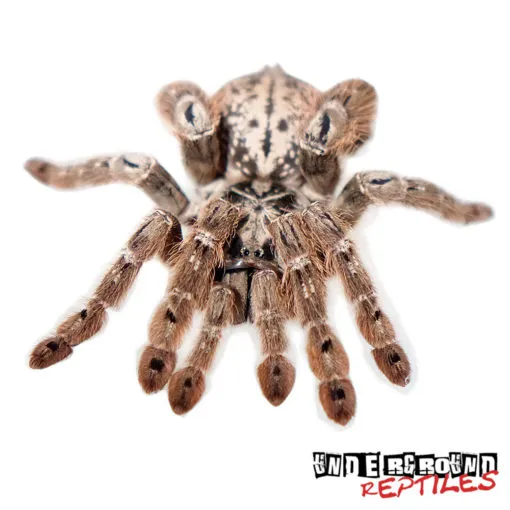
The primary threats to the Togo Starburst Tarantula include habitat loss, primarily driven by deforestation for agriculture and development, and the potential impact of the pet trade if not managed sustainably. Climate change also poses a long-term risk by altering their natural environment. Conservation efforts should focus on protecting and restoring their natural habitats. This includes establishing protected areas, promoting sustainable land-use practices, and educating local communities on the importance of biodiversity conservation. Responsible pet ownership and ethical sourcing within the pet trade are vital for ensuring that the species is not over-collected from the wild. Supporting research and monitoring programs will also help to understand the species’ population dynamics and develop effective conservation strategies.
